| 1.3µm InGaAsP MQW CMBH lasers |
Effect of the active region p-doping level on differential gain
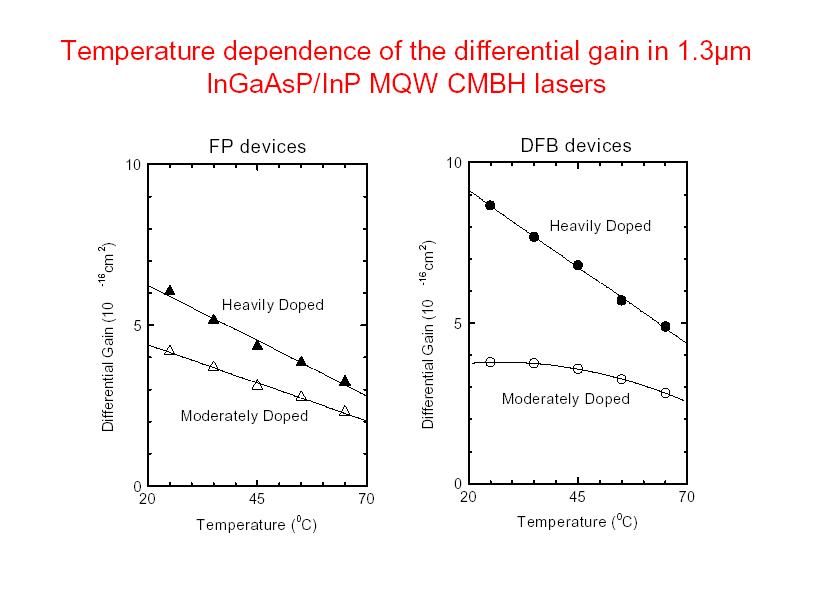 |
Experiments showed that the change of the active region doping level from 3×1017cm-3 to 3×1018cm-3 leads to a 50% increase of the differential gain for FP lasers at 250C. Heavily doped devices also exhibit more rapid reduction of the differential gain with increasing temperature. The temperature dependence of differential gain for DFB devices strongly depends on the detuning of the lasing wavelength from the gain peak. |
Optimization of the doping profile
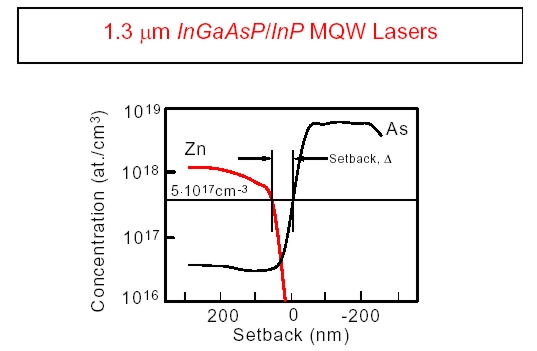 |
It was simulated and shown experimentally that there exists an optimum p-doping profile simultaneously maximizing external efficiency and minimizing threshold current. To minimize the device temperature sensitivity incorporation of the acceptor centers into the waveguide or even the active region is necessary. |
Direct Measurement of Lateral Carrier Leakage
in 1.3µm InGaAsP MQW CMBH Lasers
1.3µm InGaAsP MQW capped mesa buried heterostructure (CMBH)
lasers with mesa width ranging from 1µm (standard single mode) to 100µm (wide area)
were fabricated on one wafer with identical current blocking layers at the
sides. The single mode devices had three times larger nominal threshold
current density than the wide area devices. Measurement of gain and
loss in the devices showed the single mode devices to have 6-8cm-1 higher loss
and 40% lower optical confinement than the wide area devices. Beyond these
differences, the measurements show that up to 30% of the threshold current
in the single mode CMBH lasers does not contribute to the pumping of the MQW
active region. Injection efficiency is measured to be close to unity for both
single mode and wide mesa devices.
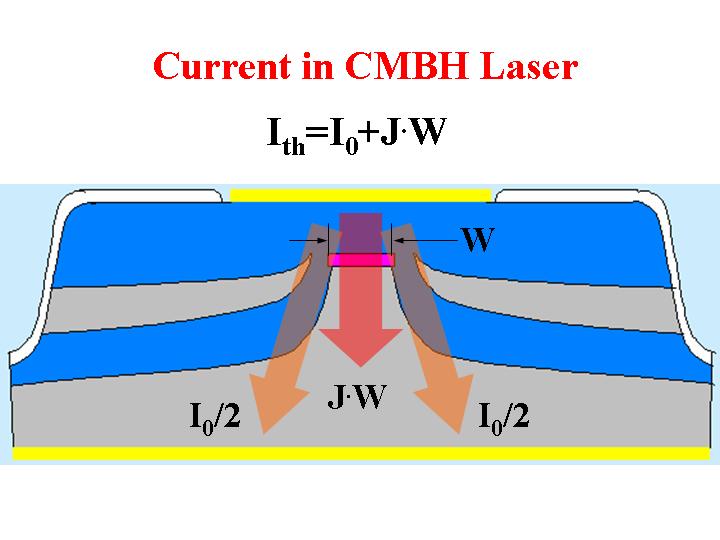 |
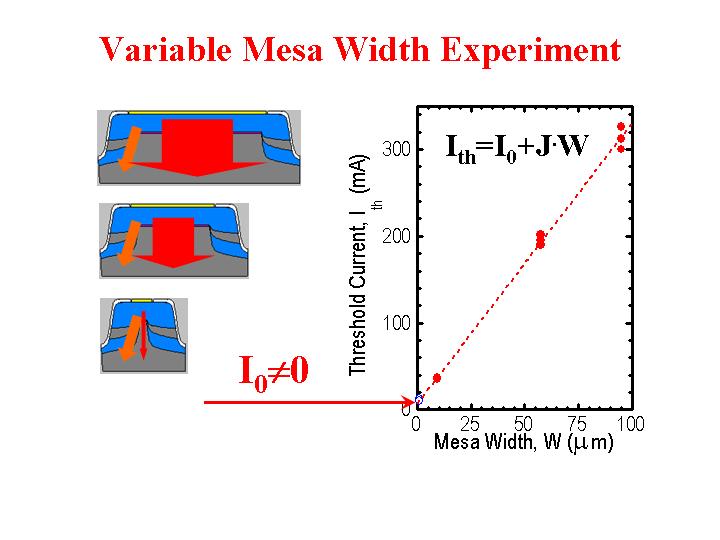 |
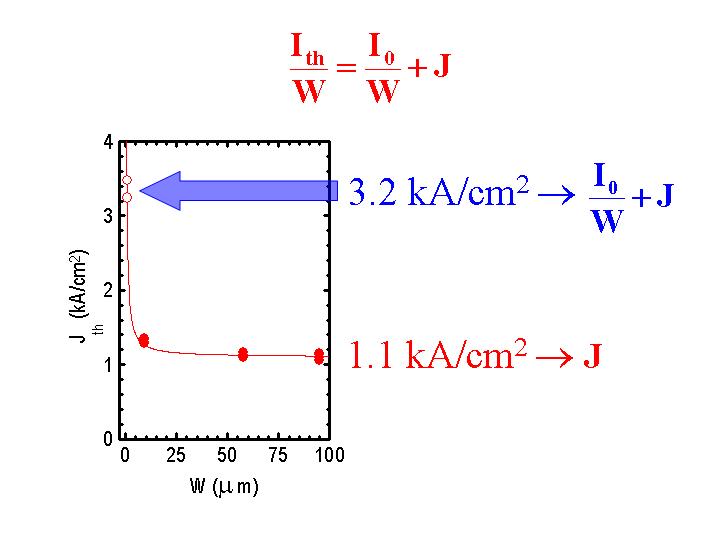 |